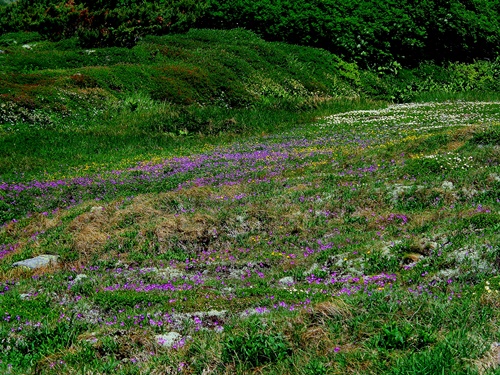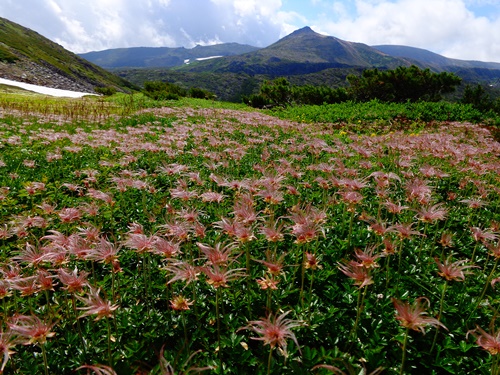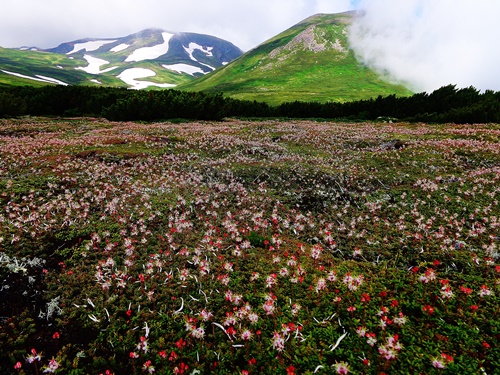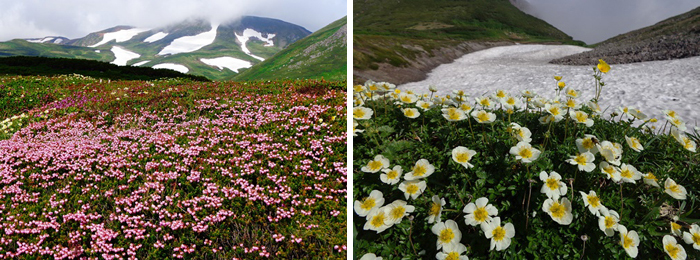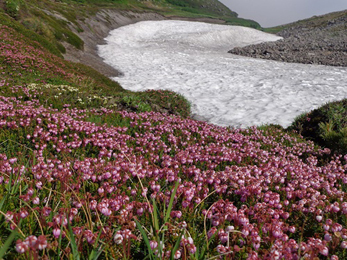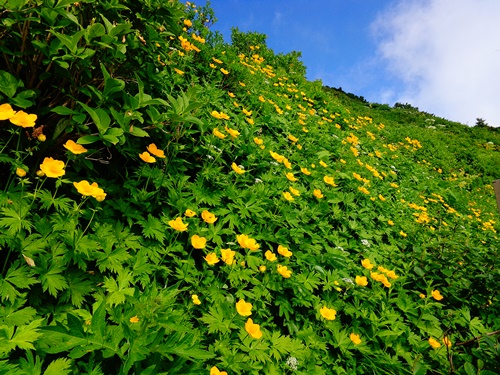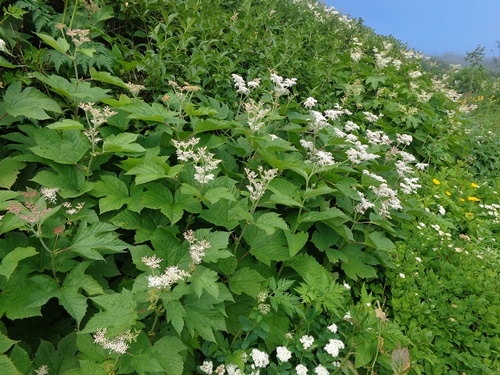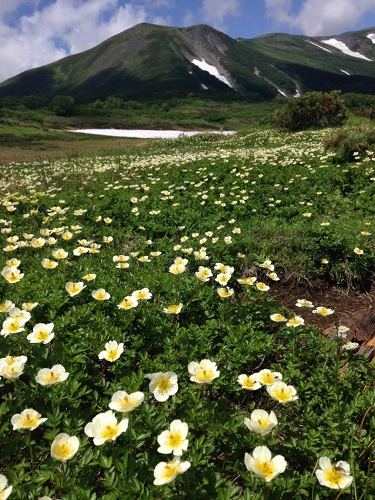Flowers of the Sieversia pentapetala, Phyllodoce caerulea, Primula cuneifolia var. cuneifolia, Potentilla matsumurae, Loiseleuria procumbens, and Diapensia lapponica subsp. obovata are appearing where the snow has melted.
Much snow remains in the direction of the Akaishi River (there is a small amount of snow on walking areas; this snow is slightly frozen). However, the combination of the snow and flowers creates a somewhat magical landscape.
As of today, the Akaishi River can be crossed. However, the river may rise if, for example, there is rain on the previous day, so climbers should be properly prepared with the necessary gear.
In addition, there is still a snowy gorge of about 25 meters below the Mt. Hokuchindake junction. Although the amount of snow is much smaller than last year, climbers should still be sufficiently careful when ascending and descending.
Photo: Utsukushigahara Jul. 24
Much snow remains in the direction of the Akaishi River (there is a small amount of snow on walking areas; this snow is slightly frozen). However, the combination of the snow and flowers creates a somewhat magical landscape.
As of today, the Akaishi River can be crossed. However, the river may rise if, for example, there is rain on the previous day, so climbers should be properly prepared with the necessary gear.
In addition, there is still a snowy gorge of about 25 meters below the Mt. Hokuchindake junction. Although the amount of snow is much smaller than last year, climbers should still be sufficiently careful when ascending and descending.
Photo: Utsukushigahara Jul. 24
